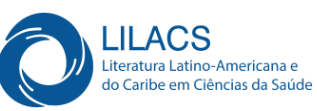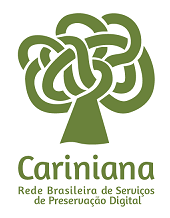Characters strengths scale: relations with instruments to evaluate the affections and professional interests
DOI:
https://doi.org/10.5433/2236-6407.2018v9n2p04Keywords:
Positive psychology, Positive and Negative Affections, Professional Orientation, College Students, Positive CharacteristicsAbstract
This research aimed to relate the constructs Character Forces, Affects, and Professional Interests in university students, using the instruments: Escala de Forças de Caráter (EFC), Escala de Afetos Zanon (EAZ), Escala de Aconselhamento Profissional (EAP), and a Socio-demographic Questionnaire. A total of 350 college students from different courses, aged between 17 and 53 (M = 22.57; SD = 5.96) participated in the study. The forces correlated positively with the positive affects and with the dimensions of interests, and Agrarian Sciences was the dimension with the highest correlations. Participants over the age of 19 have more Love for Learning, Perseverance, and Interests for Bureaucratic Activities. It is concluded that positive forces and affections can be related and used in a way to help the development of the positive characteristics of the individuals and that the relation of the forces with the dimensions can characterize possible personalities that show interest by a certain area.Downloads
References
Barros, M. V. C., Noronha, A. P. P., & Ambiel, R. A. M. (2015). Afetos, interesses profissionais e personalidade em estudantes do ensino médio. Revista Brasileira de Orientação Profissional, 16(2), 161-171.
Cohen, J. (1988). Statistical power analysis for the behavioral sciences. Hillsdale, NJ: Lawrence Erlbaum.
Diener, E. (2000). Subjective Well-Being: The science of happiness and a proposal for a national index. American Psychologist, 55(1), 34-43. doi:10.1037/0003-066X.55.1.34
Hutz, C. S. (2014). Avaliação em Psicologia Positiva. Porto Alegre, RS: Artmed.
Lent, R., Brown, S.D., & Hackett, G. (1994). Toward a unifying social cognitive theory of career and academic interest, choice and performance. Journal of Vocational Behavior, 45, 79-122.
Littman-Ovadia, H., Potok, Y., & Ruch, W. (2013). The Relationship between vocational personalities and character strengths in adults. Scientific Research, 4(12), 985-993.
Noronha, A. P. P., & Ambiel, R. A. M. (2006). Orientação profissional e vocacional: Análise da produção científica. Psico-USF, 11(1), 75-84.
Noronha, A. P. P. & Mansão, C. S. M. (2012). Interesses profissionais e afetos positivos e negativos: Estudo exploratório com estudantes de ensino médio. Psico-USF, 17(2), 323-331. doi:10.1590/S1413-82712012000200016
Noronha, A. P. P., Dallazzana-Zanon, L. L., & Zanon, C. (2015). Internal structure of the Characters Strengths Scale in Brazil. Psico-USF, 20(2), 229-235. doi:10.1590/1413-82712015200204
Noronha, A. P. P., Ottati, F., Mansão, C., & Cezar, E. (2011). Aplicação da escala de aconselhamento profissional em estudantes universitários. ACTA Colombiana de Psicología, 14(1), 155-164.
Noronha, A. P. P., Sisto, F. F., & Santos, A. A. A. (2007). Escala de Aconselhamento Profissional - EAP: Manual de aplicação. São Paulo, SP: Vetor Editora Psico-Pedagógica Ltda.
Nunes, C. H. S., Hutz, C. S., & Giacomoni, C. H. (2009). Associação entre o bem-estar subjetivo e personalidade no modelo dos cinco grandes fatores. Avaliação Psicológica, 8(1), 99-108.
Park, N., & Peterson, C. (2006). Moral competence and character strengths among adolescents: The development and validation of the Values in Action Inventory of Strengths for Youth. Journal of Adolescence, 29, 891-909.
Park, N., Peterson, C., & Seligman, M. E. P. (2004). Strengths of character and well-being. Journal of Social & Clinical Psychology, 23(5), 603-619. doi:10.1521/jscp.23.5.603.50748
Peterson, C. & Seligman, M. (2004). Character strengths and virtues: A handbook and classification. New York: Oxford University Press/Washington, DC: American Psychological Association.
Proyer, R.T., Sidler, N., Weber, M., & Ruch, W. (2012). A multi-method approach to studying the relationship between character strengths and vocational interests in adolescents. International Journal for Educational and Vocational Guidance, 12(2), 141-157. doi:10.1007/s10775-012-9223-x
Rounds, J. B. (1995). Vocational interests: Evaluation of structural hyphoteses. In D. Lubinski & R. V. Dawis (Eds.), Assessing individual differences in human behavior: New concepts, methods, and findings (pp. 177-232). Palo Alto, CA: Consulting Psychologists Press.
Rounds, J. B., & Su R. (2014). The Nature and Power of Interests. Association for Psychological Science, 23(2), 98-103.
Sartori, F. A., Noronha, A. P. P., & Nunes, M. F. O. (2009). Comparações entre EAP e SDS: Interesses profissionais em alunos do ensino médio. Boletim de Psicologia, 59(1), 17-29.
Savickas, M. L. (1999). The Psychology of Interests. In M. L. Savickas & A. R. Spokane (Eds.), Vocational interests: Meanings, measurement and counseling use (pp.19-56). Palo Alto, CA: Davies-Black.
Seligman, M. E. P. (2004). Felicidade autêntica: Usando a nova psicologia positiva para a realização permanente. Rio de Janeiro, RJ: Objetiva.
Snyder, C. R. & Lopez, S. J. (2009). Psicologia Positiva. Porto Alegre, RS: Artmed.
Watson, D., Clark, L. A., & Tellegen, A. (1988). Development and validation of brief measures of positive and negative affect: The PANAS scales. Journal of Personality and Social Psychology, 54(6), 1063-1070.
Weber, M., Ruch, W., Littman-Ovadia, H., Lavy, S., & Gai, O. (2013). Relationships among higher-order strengths factors, subjective well-being, and general self-efficacy: The case of Israeli adolescents. Personality and Individual Differences, 55(3), 322-327. doi: 10.1016/j.paid.2013.03.006
Wright, T. A., & Lauer, T. L. (2013). What is character and why it really does matter. Organizational Dynamics, 42, 25-34.
Zanon, C., Bastianello, M. R., Pacico, J. C., & Hutz, C. S. (2013). Desenvolvimento e validação de uma escala de afetos positivos e negativos. Psico-USF, 18(2), 193-202.
Downloads
Published
How to Cite
Issue
Section
License
Copyright (c) 2018 Estudos Interdisciplinares em Psicologia

This work is licensed under a Creative Commons Attribution 4.0 International License.
The Copyright of the published manuscripts belongs to the Journal. Since they are published in an open access Journal, they are freely available, for private use or for use for educational and non-commercial purposes.
The Journal has the right to make, in the original document, changes regarding linguistic norms, orthography, and grammar, with the purpose of ensuring the standard norms of the language and the credibility of the Journal. It will, however, respect the writing style of the authors.
When necessary, conceptual changes, corrections, or suggestions will be forwarded to the authors. In such cases, the manuscript shall be subjected to a new evaluation after revision.
Responsibility for the opinions expressed in the manuscripts lies entirely with the authors.



















